ASP.NET MVC is designed to provide a structured, testable, and maintainable way to build web applications. It allows for a clear separation of concerns between the application’s data, business logic, and user interface, making it easier to develop and maintain complex web applications.
According to this Wikipedia post, ASP.NET MVC is a web application framework that is developed by Microsoft that implements the model-view-controller (MVC) design pattern built on top of the ASP.NET framework, which is a web application development platform also developed by Microsoft.
MVC, on the other hand, is a software architectural design pattern for implementing application user interfaces. Such a design pattern divides the application into three main components: Model, View, and Controller. This is ideal for separation of concern.
- Model (business layer)
- View (display layer)
- Controller (input control)
The model is used to handle the data and business logic of the application, the view handles the rendering of the user interface, and the controller handles user input and communicates with the model and view.
ASP.NET advantages
Here are some advantages of using ASP.NET MVC in web development:
- Separation of concerns: The MVC pattern allows for a clear separation of the application’s various components, making it easier to manage and maintain.
- Testability: The separation of concerns in MVC makes it easier to write automated tests for the different components of the application.
- Flexibility: ASP.NET MVC allows developers to have more control over the application’s behavior and appearance.
- Routing: ASP.NET MVC provides a powerful routing system that enables developers to easily define custom routes for the application.
- Integration with other ASP.NET features: ASP.NET MVC can be used in conjunction with other ASP.NET features, such as Web API, SignalR, and Web Forms, to build full-featured web applications.
- Good performance: ASP.NET MVC applications can be optimized to perform well, even under high traffic levels.
- Community support: ASP.NET MVC is a widely used framework, and a large community of developers can provide support and resources.
How to create a simple ASP.NET application
Below I will show you how to create a simple asp.net application.
Here are the steps for creating a new ASP.NET MVC application in Visual Studio:
- Open Visual Studio and select “Create a new project” from the start page.
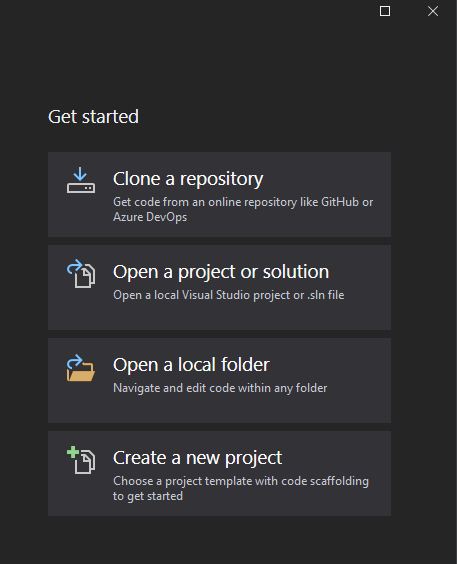
- In the “Create a new project” window, select “ASP.NET Web Application” from the list of templates.
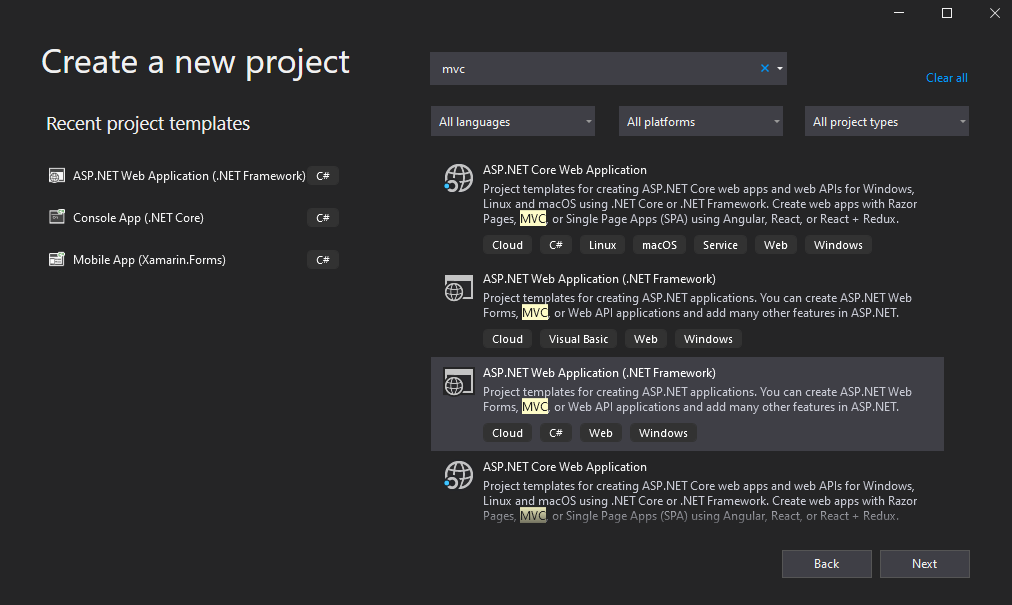
- Give the project a name and location, and click “OK”.

- In the “New ASP.NET Project” window, select the “MVC” template.

- Click “CREATE” to create the project.
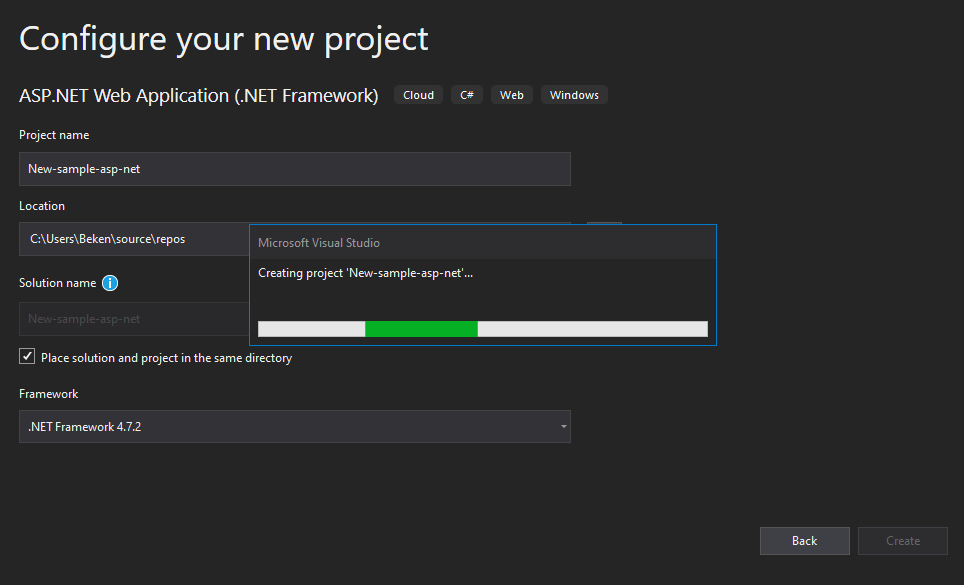
- Visual Studio will generate the project structure and files for the ASP.NET MVC application.
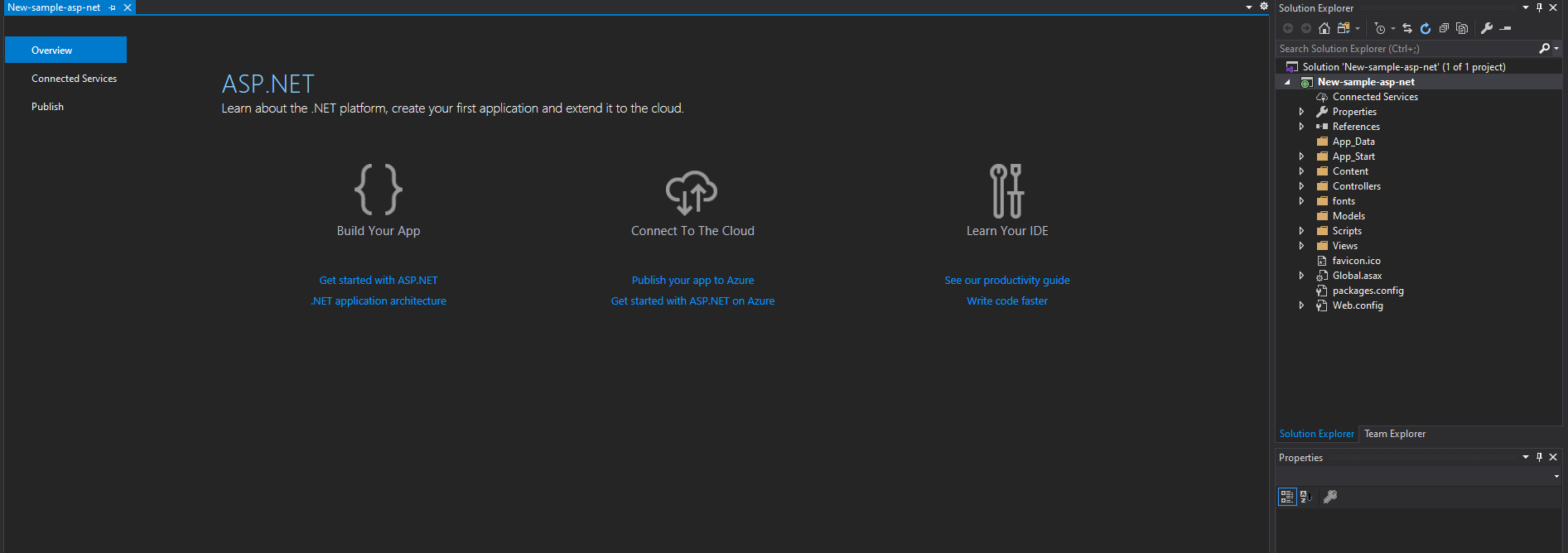
- To run the application, press F5 or click the “Start” button in the toolbar. This will build and run the application, and the default homepage will be displayed in a web browser.
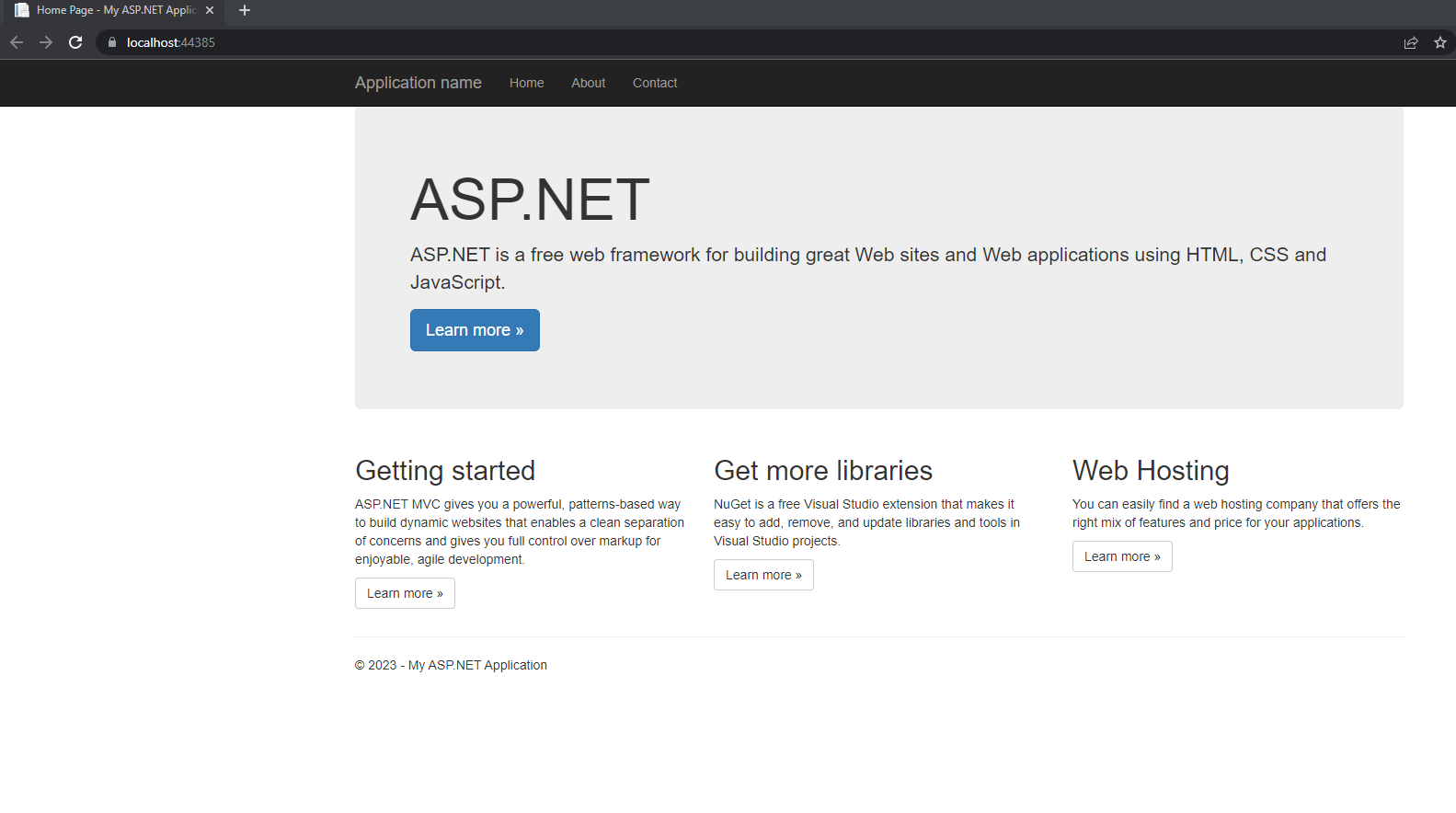
Note: These steps are for creating an ASP.NET MVC application in Visual Studio. There are other ways to create an ASP.NET MVC application, such as using the .NET command-line tools or other IDEs.